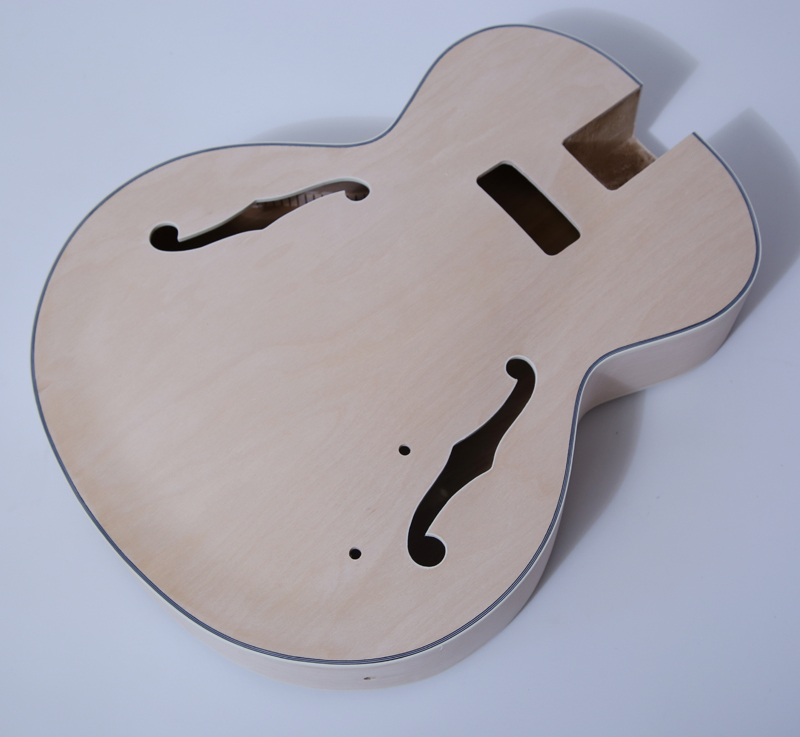If you have always wanted to own your jazz or 335 style hollow body electric guitar but found the price a little on the high side you may be interested in taking a closer look at the range of DIY hollow body guitar kits currently available.
Hollow body guitar kits typically represent very good value for money considering the workmanship required to produce them is quite a bit more involved than for a standard electric guitar.
Hollow Body Guitar Kits
For example, the sides of the guitar's bodies are laminated, then planed and shaped using a bending iron. The timber itself often requires soaking in warm water first to ensure maximum pliability and is then set in a mold. The bodies also require bracing or struts for additional support. For all intents and purposes, these guitars are more similar in construction to an acoustic guitar.
Semi-hollow body electric guitar kits such as the semi-hollow bodyis less involved, however, and are essentially a routed solid timber body with a maple cap then placed on the top face of the guitar.
Solid-body electric guitar kits in comparison are shaped, solid pieces of timber and require far less time to produce.

Build your own hollow body guitar kit
Having sold hollow body kit guitars and assembling a number of my own over the years I’ll also provide some useful tips and tricks regarding finishing and assembly, as wiring a hollow body electric guitar is a different proposition to that of an ST or TE style kits for example.
LP Hollow Body
The hollow body LP has been an extremely popular guitar, matching sales of the standard hollow body LP when it comes to kit guitar sales, thanks largely to its striking appearance and overall suitability to almost all styles of music.
Construction
The LP hollow body is more or less a solid body guitar, routed to hollow out the body and then capped with a figured maple top which allows for a stained finish that highlights the figured grain.
LP hollow body
In many cases, the LP hollow body can be purchased in either a set neck or bolt-on, depending on your preference and is most often supplied with block style inlays.
The overall weight as you might expect is less than that of a standard LP guitar kit which in some cases may brighten the tone to a degree, but tone and playability wise is otherwise identical and is well suited to blues and rock.
Assembly and finishing tips
The LP hollow body, as per the 175 and 335 typically does not come with a rear control plate. Meaning all wiring must be completed via the F-holes on the face of the guitar also. But, as discussed previously if using the guidewire technique described above, while requiring some patience assembly is a relatively straight forward practice.
Check out LP hollow body guitar kits
Due to the figured maple top, the LP hollow body is ideally suited to staining. Just be sure to note if your LP has a full maple cap (80+mm) or is simply a veneer (1-3mm). Both options can look particularly good, but if your guitar has a veneer top it is important to ensure you apply the stain lightly and allow drying time between coats, as in some cases if you allow the surface of the guitar to hold too much moisture it does have a tendency to ripple and bulge which is difficult to amend.
I hope the information presented above provides some insight into the world of hollow-body guitar kits. Having assembled several of these personally, while they do represent some challenges as compared to a standard electric guitar kit it's fair to say even a complete beginner should have no trouble assembling one of these guitars and achieving a great result.

